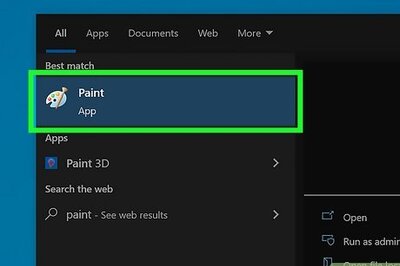
views
As one witnesses the rise of the BJP in West Bengal, everyone wants to find the answer to that big question this poll season—how did Hindutva mobilization by the RSS happen in a state that not too long ago was associated with Left-leaning ideology. We must understand that we see is just the tip of the iceberg; the part of the RSS which is invisible is much larger than what is visible. My understanding of the RSS suggests that its mobilization strategy always starts with ideas, and then evolves with practice. Although there is not sufficient secondary literature and field documentation available on the RSS’ journey in Bengal, but the available material shows that the RSS took roots in Bengal, first through ideas.
And, this can be traced to the experience of Partition in 1947 and then the formation of Bangladesh in 1971. It is in this memory of Partition and displacement where the RSS finds an entry point in Bengal. The sense of loss has been handed down through generations of displaced Bengalis, regardless of how rich or poor they are. You may not find them being very vocal about this displacement, but scratch the surface, and you will hear stories of families leaving their homes in East Pakistan and fleeing to Bengal.
RSS planted itself in these Partition experiences of the refugees, the displaced and the resettled Bengalis. Despite favourable resettlement programmes launched by the Left and the Trinamool Congress, the deeper psychic wound of a displaced Bengali population (read Hindus) was never attended to.
How Sangh built a base in Bengal
My research on the oral histories of 1947 Partition, especially in Bengal, shows that the Sangh was running a few refugee camps then and those who received help could be counted among the first-generation of Sangh sympathizers in Bengal. Second, if one were to map the activities of the Sangh in Bengal, one may find that the Hindu-dominated areas surrounding Muslim-dominated clusters emerged as its strong base. Third, in the 1990s, the Sangh established an organization called the Seema Jagran Manch, which would especially work in the villages located along the India-Bangladesh border. These border villages, subsequently, became another strong base for the Sangh.
Fourth, the Gau Raksha movement, which was quite visible in the North in the 1960s, found resonance in Bengal too. This was also the time when the Sangh extended its interactions with popular ‘Hindu’ sects working in Bengal—followers of Vaishnavism, a section of those working with the Ramakrishna Mission, followers of Aurobindo, and many other smaller Hindu sects. Through these interactions, the Sangh formed a Hindutva public sphere, which was not very vocal in Bengal but expressed itself by organizing programmes, meetings and celebrations.
The assertive Hindu in Bengal
The Sangh always works at the grassroots, with socio-religious engineering at the micro level. This involves building deep (almost familial) ties with its followers, invoking a sense of Hindutva identity among them, launching various local development projects, such as schools, health camps and hospitals, reviving traditional community resources such as ponds, bagichas etc. Through social reconstruction programmes, the Sangh strengthens its ties with the communities.
After 2010, one can clearly see their work with tribal communities in Jangal Mahal districts like Jhargram. Under its Samrasta campaign, the Sangh made it a point to include these communities under the Hindutva mobilization. After 2014, the effort became more intense and also effective. While both the Left and the TMC forged political ties with Dalit communities like the Matuas, the Sangh was working among them, silently, building socio-religious relationship by invoking and strengthening the Hindutva consciousness. The citizenship promise for Hindu refugees—most Matuas have migrated from Bangladesh—also touched a chord.
A section of people in Bengal perceive both the Left and the TMC as having indulged in Muslim appeasement in the name of secularism—and that has created space for Hindutva assertion in Bengal. The UP model to assert caste and community pride under the broader narrative of Hindutva, also implemented by the BJP and the Sangh in their regular discourse, prepared the ground for the rise of Hindutva. The Hindu public perception of Hindu victimhood during the dominance of secular politics has also helped the Sangh build a broader Hindutva identity, which may work effectively at the social as well the political level in Bengal.
Read all the Latest News, Breaking News and Coronavirus News here. Follow us on Facebook, Twitter and Telegram.



















Comments
0 comment